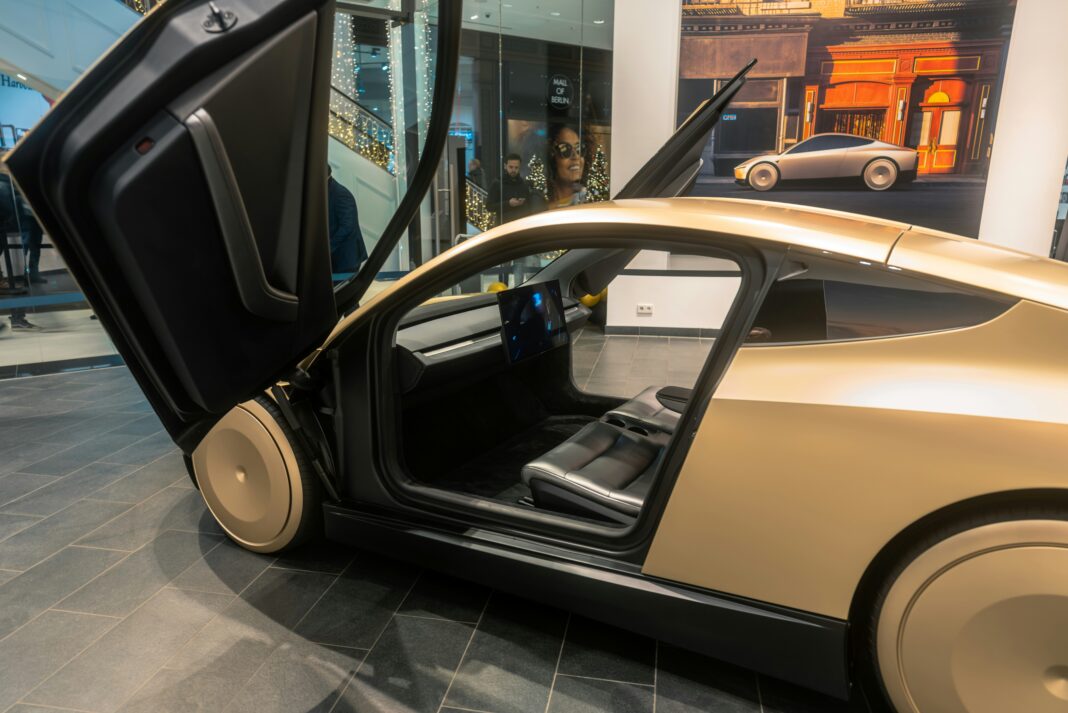Image courtesy of Maxim on Unsplash
Robotaxis have been covered for many years on AGREEN1. They are ride-hailing vehicles that have no driver. Robotaxi, self-driving, autonomous are all interchangeable. The two pioneers in robotaxis are Waymo (an Alphabet/Google product) and Cruise (a GM product). Waymo currently has the lion’s share of the market, and Cruise had to stall development for numerous reasons. Now Tesla is looking to enter the market.
Tesla calls its EV robotaxi the Cybercab. It was displayed at the Petersen Automotive Museum in Los Angeles and is now on display in Brussels, Belgium. The Tesla Cybercabs have no: rearview window, steering wheel, acceleration, or brake pedals. They are designed as a two-seater with lots of trunk space in the back.
Right now, Tesla CEO Elon Musk envisions the EV Cybercab to be purchased by taxi drivers who will not drive them but who will own and manage them. Musk said mass production of the fully self-driving (FSD) EVs won’t begin until 2026 and predicts that purchasing one will be sometime in 2027, with a price tag of around $30K.
Musk has often stated that “autonomous vehicles will save lives and prevent injuries compared to human-driven cars,” this type of taxi service can significantly reduce the need for a personal car; maybe one per household would be enough if this all works out. That saves people on car payments, fuel and vehicle registration, maintenance, and insurance costs.
According to Kelly Blue Book, the US will buy 1.3 million EVs in 2024. Vehicle manufacturers hope US EV sales will be around 1.1 million units in 2025. However, the new US President is not a supporter of EVs or any clean, renewable energy, so many are very anxious that EV sales of all kinds will plummet in 2025 and beyond once the federal tax discounts are removed.
For 2024, Tesla’s share price had increased by around 62% from last year.






